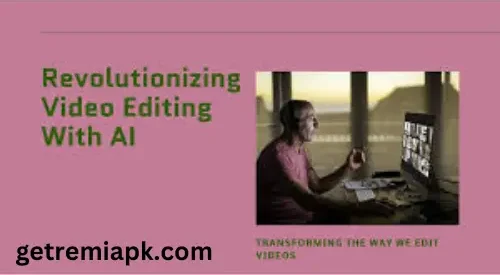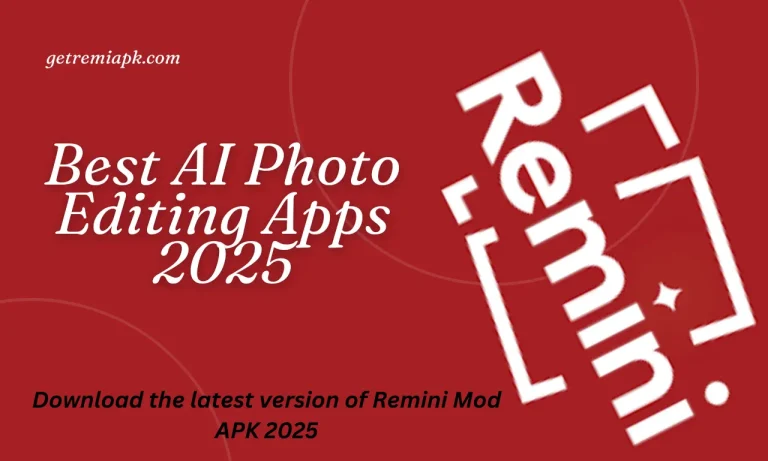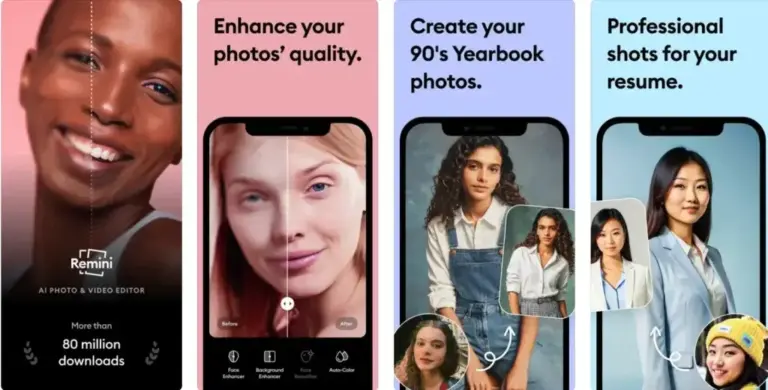How AI is Revolutionizing Photo Editing: The Future of Visual Creativity (2025)
In the digital age, where images dominate social media, websites, and marketing materials, photo editing has become an essential skill for photographers, marketers, and everyday users alike. From the top 10 photo editing apps to tools like Remini Mod APK, which enhances old photos with AI technology, the landscape of editing is rapidly evolving.
With the advent of artificial intelligence (AI), photo editing is undergoing a significant transformation. AI is not just a tool; it’s a game changer that enhances efficiency, creativity, and accessibility. This article explores the various ways AI is revolutionizing photo editing and its implications for creators at all levels.

AI-Powered Enhancements: Instant Improvements
AI technology has made it possible to achieve professional-quality results in a fraction of the time it once took. Key features include:
- Automatic Brightness Adjustment: AI algorithms analyze the overall lighting in a photo and make intelligent adjustments to brightness and contrast. This ensures that images have the right exposure without manual tweaking.
- Color Correction: AI tools automatically correct color imbalances, making photos more vibrant and true to life. This is particularly useful for images taken in challenging lighting conditions.
- Noise Reduction: Many AI applications effectively reduce noise, especially in low-light images. This enhancement improves clarity and detail, making the final image look more polished.
Smart Object Recognition: Effortless Selection
One of the most time-consuming aspects of photo editing has traditionally been selecting specific objects within an image. AI has simplified this process significantly:
- Automatic Subject Isolation: AI can quickly identify and isolate subjects in a photo. For instance, it can distinguish a person from the background, allowing for targeted edits like background changes or selective color adjustments.
- Background Changes: With smart object recognition, users can replace backgrounds with just a few clicks. This capability is especially popular in product photography and social media content creation.
Automated Retouching: Flawless Skin and Features
AI-driven tools can automate many aspects of retouching:
- Skin Smoothing: AI detects skin imperfections, such as blemishes or uneven tones, and applies smoothing effects while preserving texture. This results in natural-looking skin enhancements.
- Facial Feature Enhancement: Beyond skin, AI can enhance facial features by brightening eyes, whitening teeth, and adjusting facial contours. This is particularly useful for portrait photography and selfies.
Creative Filters and Effects: Unleashing Artistic Potential
AI is not just about corrections; it also enhances creativity:
- AI-Generated Filters: Many apps now offer AI-generated filters that can transform photos into artistic styles, such as turning a standard photo into a painting or a sketch. This adds a unique touch to images and helps creators stand out.
- Unique Textures: AI can apply innovative textures and overlays, giving images depth and interest. Users can experiment with various artistic styles to find what resonates best with their vision.
Learning from User Preferences: Personalization at Its Best
AI enhances the editing experience by learning from user behavior:
- Behavior Analysis: AI tracks how users edit their photos, learning their preferences and styles over time. This enables the app to suggest features and adjustments that align with the user’s typical edits.
- Consistent Results: This personalization leads to more consistent results across different projects, as the app adapts to the user’s style, saving time and improving overall quality.
Real-Time Collaboration: Bridging Distances
The rise of cloud-based tools has changed how teams collaborate on photo editing:
- Cloud-Based Tools: AI facilitates real-time collaboration among users, regardless of their physical locations. This is particularly valuable for teams working on marketing campaigns or joint projects.
- Feedback Integration: Users can share edits and receive instant feedback from collaborators, making it easier to refine images collectively and meet project deadlines.
Future Possibilities: A Glimpse Ahead
The future of AI in photo editing holds exciting possibilities:
- Deeper Contextual Understanding: Future AI tools may develop a deeper understanding of the context of images, allowing for more intuitive editing suggestions and enhancements.
- Image Generation: Emerging technologies might enable users to generate entirely new images based on input parameters or existing images, further expanding creative possibilities.
Conclusion
AI is revolutionizing photo editing by making it more accessible, efficient, and creative. As technology continues to evolve, we can expect even greater innovations that empower creators to push the boundaries of their visual storytelling. Embrace the future of photo editing, where creativity meets cutting-edge technology, and discover the endless possibilities AI has to offer!




